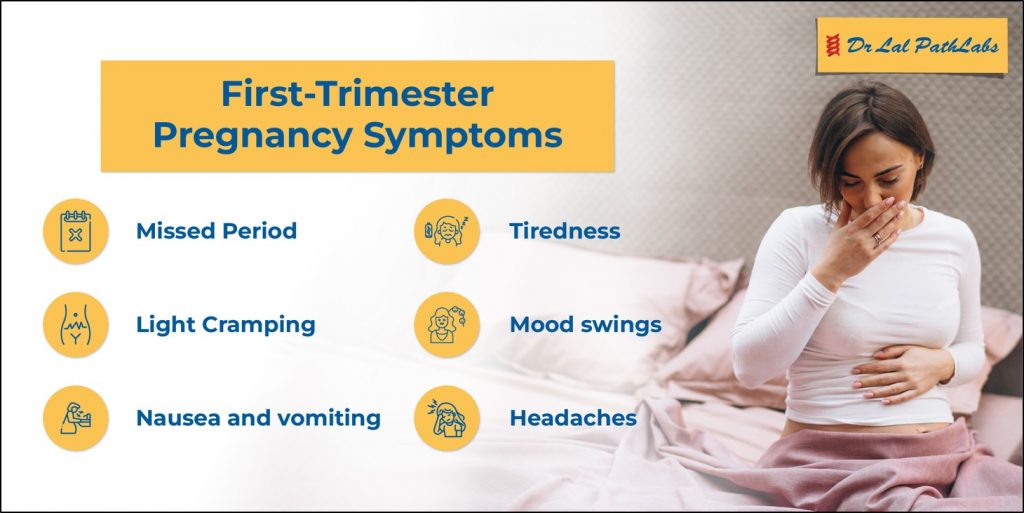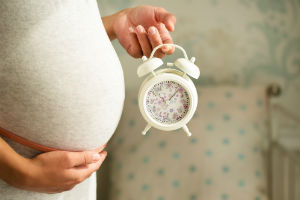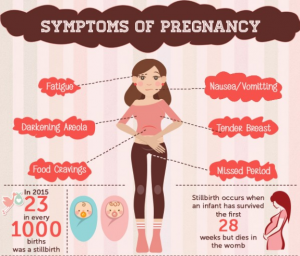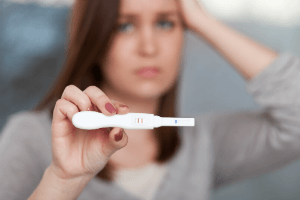First Trimester: What to Expect?

Wondering if you might be pregnant? It’s normal to feel uncertain at first. The early signs of pregnancy might be easily overlooked due to their subtlety. While every woman’s experience is unique, most pregnancies follow a similar pattern of changes and pregnancy symptoms in week 1.
Understanding the typical timeline of when symptoms emerge and what your body goes through can provide clues to clarify if you’ve conceived. This article explores the most common early pregnancy symptoms, what happens through the first trimester, and key changes you may notice.
What is the first trimester of pregnancy?
The first trimester spans from week 1 to week 12, starting from the first day of the last menstrual period. It’s a time of rapid foetal development and significant changes in the mother’s body. During these initial weeks, the body gears up to nurture and support the growing life within.
Early pregnancy symptoms
The first trimester often brings about a range of early pregnancy symptoms. These symptoms can vary from woman to woman, but some common signs include:
- Missed period
One of the first symptoms of pregnancy is a missed period, which can occur as early as a week into pregnancy. Typically, most individuals miss their period approximately two weeks after conception. It’s because the implantation of the fertilised egg occurs weeks after ovulation and just before the expected next period.
- Morning sickness
Nausea is one of the most common early signs of pregnancy. Many expectant mothers experience nausea at sometime early during their pregnancy. It’s very common during the first trimester due to hormonal fluctuations and increased smell sensitivity. Although it’s known as ‘morning sickness,’ it can occur at any time of the day.
- Fatigue
Fatigue is one of the most common symptoms of pregnancy in the first month. A decrease in blood pressure, hormonal changes, and increased blood volume can all cause fatigue.
- Breast changes
Breast soreness and tenderness are some of the common early signs of pregnancy. It happens primarily due to an increase in oestrogen and progesterone levels. The areolas (the area around the nipples) may also darken.
- Frequent urination
During the first trimester of pregnancy, the uterus grows and puts pressure on the bladder. This leads to the need for more frequent trips to the restroom, especially during the first trimester.
- Raised basal body temperature
During pregnancy, it’s common for your basal body temperature to be slightly higher. This means that your body’s core temperature can rise more quickly when you engage in physical activity or when it’s hot outside. That’s why staying well-hydrated and cautious while exercising is important.
- Mood swings
When you’re pregnant, the levels of hormones like oestrogen and progesterone in your body rise significantly. These hormonal changes can lead to increased emotional sensitivity and reactivity.
Thus, it’s common to experience mood swings during pregnancy and feelings of sadness, irritability, nervousness, and even intense happiness.
- Food cravings
Fluctuations in hormones, particularly human chorionic gonadotropin (hCG) and oestrogen, distort the sense of taste and smell. This can result in aversions to foods that were previously enjoyed and sudden cravings for specific flavours.
While some may develop an aversion to strong odours or spicy foods, others might find comfort in the oddest combinations of food.
- Gastrointestinal changes
Hormonal changes can slow down digestion, leading to constipation and bloating. In fact, bloating is one of the common early pregnancy symptoms.
What to expect in the first trimester of pregnancy?
In the early stages of pregnancy, your body undergoes remarkable changes that lay the foundation for your baby’s development.
Several developments take place as the embryo finds its place within the uterine wall. These include-
- Amniotic sac: The amniotic sac, a protective fluid-filled sac, forms around the developing embryo. This sac provides a safe environment for the foetus to grow, cushions against external pressure, and helps maintain a stable temperature.
- Placenta: The placenta starts to develop, facilitating the exchange of oxygen, nutrients, as well as waste between the foetus and the mother. It establishes a vital connection to the uterine wall to ensure proper nourishment.
- Umbilical cord: This lifeline connects the foetus to the placenta. This cord contains blood vessels that carry essential nutrients and oxygen from the mother to the foetus and transport waste products away.
The initial trimester is a critical window, making the foetus susceptible to harm from substances like alcohol, drugs, and illnesses such as rubella.
Changes and development in the first trimester
The chart below explains the changes that occur during the first trimester of pregnancy.
The bottom line
As the pregnancy progresses, it’s important to remember that every woman’s experience is unique. While some may breeze through the first trimester with minimal discomfort, others might face more pronounced early pregnancy symptoms. Also, regular prenatal tests and checkups are essential to ensure the mother’s and growing foetus’s health and well-being.














